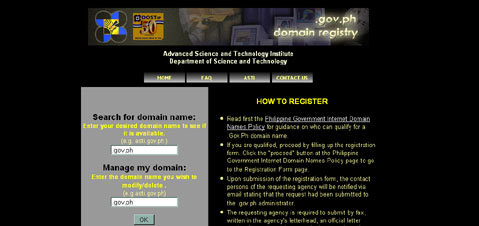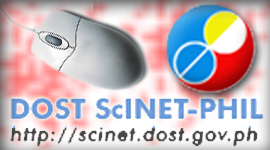The goals that inform developments in this rapidly growing field include:
Sustainability - meeting the needs of society in ways that can continue indefinitely into the future without damaging or depleting natural resources. In short, meeting present needs without compromising the ability of future generations to meet their own needs.
“Cradle to cradle” design - ending the “cradle to grave” cycle of manufactured products, by creating products that can be fully reclaimed or re-used.
Source reduction - reducing waste and pollution by changing patterns of production and consumption.
Innovation - developing alternatives to technologies - whether fossil fuel or chemical intensive agriculture - that have been demonstrated to damage health and the environment.
Viability - creating a center of economic activity around technologies and products that benefit the environment, speeding their implementation and creating new careers that truly protect the planet.
What is Green Technology?
The term “technology” refers to the application of knowledge for practical purposes.
The field of “green technology” encompasses a continuously evolving group of methods and materials, from techniques for generating energy to non-toxic cleaning products.
The present expectation is that this field will bring innovation and changes in daily life of similar magnitude to the “information technology” explosion over the last two decades. In these early stages, it is impossible to predict what “green technology” may eventually encompass.
Green Technology Goals
Examples of Green Technology...
Examples of green technology subject areas
Energy
Perhaps the most urgent issue for green technology, this includes the development of alternative fuels, new means of generating energy and energy efficiency.
Green building
Green building encompasses everything from the choice of building materials to where a building is located.
Environmentally preferred purchasing
This government innovation involves the search for products whose contents and methods of production have the smallest possible impact on the environment, and mandates that these be the preferred products for government purchasing.
Green chemistry
The invention, design and application of chemical products and processes to reduce or to eliminate the use and generation of hazardous substances.
Green nanotechnology
Nanotechnology involves the manipulation of materials at the scale of the nanometer, one billionth of a meter. Some scientists believe that mastery of this subject is forthcoming that will transform the way that everything in the world is manufactured. “Green nanotechnology” is the application of green chemistry and green engineering principles to this field.
Top Ten U.S. Cities with Most Green Technologies:
1) Los Angeles, CA
2) San Francisco, CA
3) Houston, TX
4) Washington D.C.
5) Dallas-Fort Worth, TX
6) Chicago, IL
7) Denver, CO
8) Minneapolis-St. Paul, MN
9) Atlanta, GA
10) Seattle, WA
Green technology was hot in 2008. Barack Obama won the presidential election promising green jobs to Rust Belt workers. Investors poured $5 billion into the sector just through the first nine months of the year. And even Texas oilmen like T. Boone Pickens started pushing alternative energy as a replacement for fossil fuels like petroleum, coal and natural gas.
But there's trouble on the horizon. The economy is hovering somewhere between catatonic and hebephrenic, and funding for the big plans that green tech companies laid in 2008 might be a lot harder to come by in 2009. Recessions haven't always been the best times for environmentally friendly technologies as consumers and corporations cut discretionary spending on ethical premiums.
Still, green technology and its attendant infrastructure are probably the best bet to drag the American economy out of the doldrums. So, with the optimism endemic to the Silicon Valley region, we present you with the Top 10 Green Tech Breakthroughs of 2008, alternatively titled, The Great Green Hope.
1. CALERA'S GREEN CEMENT DEMO PLANT OPENS
Cement? With all the whiz bang technologies in green technology, cement seems like an odd pick for our top clean technology of the year. But here's the reason: making cement — and many other materials — takes a lot of heat and that heat comes from fossil fuels.
Calera's technology, like that of many green chemistry companies, works more like Jell-O setting. By employing catalysis instead of heat, it reduces the energy cost per ton of cement. And in this process, CO2 is an input, not an output. So, instead of producing a ton of carbon dioxide per ton of cement made — as is the case with old-school Portland cement — half a ton of carbon dioxide can be sequestered.
With more than 2.3 billion tons of cement produced each year, reversing the carbon-balance of the world's cement would be a solution that's the scale of the world's climate change problem.
In August, the company opened its first demonstration site next to Dynegy's Moss Landing power plant in California, pictured here.
2. PROJECT BETTER PLACE FINDS HOMES
Green technologies are dime a dozen, but a business model that could allow an entirely new, green infrastructure to be built is a rare thing.
Doing just that is the centerpiece of Sun Microsystems' SAP veteran Shai Agassi's vision for Project Better Place, a scheme that would distribute charging and swappable battery stations throughout smallish geographies like Israel, Hawaii and San Francisco. So far, there's very little steel in the ground, but in early December, the company's first charging location opened in Tel Aviv, Israel. Agassi's plan is one of several projects — like new biofuels rail terminals — that could create fundamentally new energy ecosystems.
Some of these systems, however, are actually throwbacks to earlier eras. As Peter Shulman, a historian of technology at Case Western Reserve University, likes to remind his students: in the early 20th century, before the Model T, one-third of all cars were electric. (Image: Joe Puglies/WIRED)
3. SOLAR CELL PRODUCTION GETS BIG, GIGA(WATT)BIG
Every clean tech advocate's dream is a power-generating technology that could compete head-to-head with coal, the cheapest fossil fuel, on price alone. Nanosolar, one of a new generation of companies building solar panels out of cheap plastics, could be the first company to get there. Early this year, the company officially opened its one-gigawatt production facility, which is many times the size of most previous solar facilities.
Nanosolar, in other words, has found a process that can scale: it works as well in production as it does in the lab. That's the main reason that the company has picked up half-a-billion dollars in funding from investors like MDV's Erik Straser.
"[It's the] first time in industry a single tool with a 1GW throughput," Straser wrote in an e-mail. "It's a key part of how the company is achieving grid parity with coal."

4. OBAMA PICKS A GREEN TECH EXPERT TO HEAD DOE
President-elect Barack Obama ran on the promise of green jobs and an economic stimulus package that would provide support for scientific innovation. Then, Obama picked Steven Chu, a Nobel-prize winning physicist, to head the Department of Energy. Chu had been focused on turning Lawrence Berkeley National Laboratory into an alternative-energy powerhouse. The green tech community rejoiced that one of their own would be in the White House.
That's because green tech is going to need some help. With the world economy falling into recession, the price of oil has dropped, even though there are serious concerns about the long-term oil supply. When energy prices drop, clean tech investments don't seem quite as attractive, and the renascent industry could be in trouble. It's happened before, after all.
Back in the '70s, geopolitical events sent the price of oil soaring, which, as it tends to, created a boom in green tech. But the early 1980s saw the worst recession since the Depression. Sound familiar? In the poor economic climate, focus and funds were shifted away from green tech. The last nail in the coffin was the election of Ronald Reagan, who immediately pulled off the solar panels Jimmy Carter had placed on the White House. The green tech industry collapsed.
History has given U.S. alternative energy research a second chance and environmental advocates hope that a different president will lead to a very different result.


5. SOLAR THERMAL PLANTS RETURN TO THE DESERTS
When most people think of harnessing the sun's power, they imagine a solar photovoltatic panel, which directly converts light from the sun into electricity. But an older technology emerged as a leading city-scale power technology in 2008: solar thermal. Companies like Ausra, BrightSource, eSolar, Solel, and a host of others are using sunlight-reflecting mirrors to turn liquids into steam, which can drive a turbine in the same way that coal-fired power plants make electricity.
Two companies, BrightSource and Ausra, debuted their pilot plants. They mark the first serious solar thermal experimentation in the United States since the 1980s. BrightSource's Israeli demo plant is shown above.
6. PICKENS PLAN PUSHES POWER PLAYS INTO AMERICAN MAINSTREAM
Texas oilman T. Boone Pickens might be a lot of things, but environmentalist he is not. That's why his support for a nationwide network of wind farms generated so much excitement. While his solution for transportation, natural gas vehicles, may not pan out, his Pickens Plan is the most visible alternative energy plan out there and it began to channel support from outside coastal cities for finding new sources of energy.
Of course, no one said Pickens is stupid. If his plan was adopted and major investments in transmission infrastructure were made, his wind energy investments would stand to benefit.
7. THE CATALYST THAT COULD ENABLE SOLAR
In July, MIT chemist Daniel Nocera announced that he'd created a catalyst that could drop the cost of extracting the hydrogen and oxygen from water.
Combined with cheap photovoltaic solar panels (like Nanosolar's), the system could lead to inexpensive, simple systems that use water to store the energy from sunlight. In the process, the scientists may have cleared the major roadblock on the long road to fossil fuel independence: Reducing the on-again, off-again nature of many renewable power sources.
"You've made your house into a fuel station," Daniel Nocera, a chemistry professor at MIT told Wired.com. "I've gotten rid of all the goddamn grids."
The catalyst enables the electrolysis system to function efficiently at room temperature and at ordinary pressure. Like a reverse fuel cell, it splits water into oxygen and hydrogen. By recombining the molecules with a standard fuel cell, the O2 and H2 could then be used to generate energy on demand.
8. GREEN TECH LEGISLATION GETS REAL
On the federal and state levels, several historic actions put the teeth into green tech bills passed over the last few years. A review committee of the EPA effectively froze coal plant construction, a boon to alternative energy (though earlier this month the EPA ignored the committee's ruling and it is unclear how the issue will be settled). In California, the state unveiled and approved its plan to regulate carbon dioxide emissions, which could be a model for a nationwide system. Combined with the green-energy tax credits in the $700-billion bailout bill, the government did more for green tech in 2008 than in whole decades in the past.
9. NEW MATERIALS CAGE CARBON
Carbon capture and sequestration has a seductively simple appeal: We generate carbon dioxide emissions by burning geology — coal and oil — so to fix the problem, we should simply capture it and inject it back into the ground.
It turns out, however, that it's not quite so simple. Aside from finding the right kind of empty spaces in the earth's crust and the risks that the CO2 might leak, the biggest problem with the scheme is finding a material that could selectively snatch the molecule out of the hot mess of gases going up the flues of fossil fuel plants.
That's where two classes of special cage-like molecules come into play, ZIFs and amines. This year, Omar Yaghi, a chemist at UCLA, announced a slough of new CO2-capturing ZIFs and Chris Jones, a chemical engineer at Georgia Tech, reported that he'd made a new amine that seems particularly well-suited to working under real-world condition. Both materials could eventually make capturing CO2 easier -- and therefore, more cost effective.
Perhaps better still, Yaghi's lab's technique also defined a new process for quickly creating new ZIFs with the properties that scientists — and coal-plant operators — want. Some of their crystals are shown in the image above. (Image: Omar Yaghi and Rahul Banerjee/UCLA)
10. THE ISLAND OF THE SOLAR
With money flowing like milk and honey in the land of solar technology, all sorts of schemers and dreamers came streaming into the area. One Swiss researcher, Thomas Hinderling, wants to build solar islands several miles across that he claims can produce hundreds of megawatts of relatively inexpensive power. Though most clean tech advocates question the workability of the scheme, earlier this year, Hinderling's company Centre Suisse d'Electronique et de Microtechnique received $5 million from the Ras al Khaimah emirate of the United Arab Emirates to start construction on a prototype facility, shown above, in that country. (Image: Centre Suisse d'Electronique et de Microtechnique)
What is a Netbook computer?
A Netbook is a new type of laptop computer, defined by size, price, horsepower, and operating system. They are small, cheap, under-powered, and run either an old or unfamiliar operating system.
Netbooks run either Windows XP Home edition or Linux (not only is Linux unfamiliar to many, but the versions of Linux on Netbooks are not the mainstream popular distributions). They do not run XP Professional, Vista, or OS X. Microsoft arbitrarily restricts Netbooks from running the Professional Edition of Windows XP. Likewise, Apple arbitrarily restricts OS X to Apple hardware and it has never played in the low-end realm that Netbooks occupy.* Vista requires too much horsepower to run well on a Netbook. HP has been the only company to offer Vista on a Netbook. The price, however, was so high that it's debatable whether such a machine qualifies as a Netbook.

In vitro fertilisation (IVF) is a process by which egg cells are fertilised by sperm outside of the womb, in vitro. IVF is a major treatment in infertility when other methods of assisted reproductive technology have failed. The process involves hormonally controlling the ovulatory process, removing ova (eggs) from the woman's ovaries and letting sperm fertilise them in a fluid medium. The fertilised egg (zygote) is then transferred to the patient's uterus with the intent to establish a successful pregnancy. The first test tube baby, Louise Brown, was born in 1978.
The term in vitro, from the Latin root meaning within the glass, is used, because early biological experiments involving cultivation of tissues outside the living organism from which they came, were carried out in glass containers such as beakers, test tubes, or petri dishes. Today, the term in vitro is used to refer to any biological procedure that is performed outside the organism it would normally be occurring in, to distinguish it from an in vivo procedure, where the tissue remains inside the living organism within which it is normally found. A colloquial term for babies conceived as the result of IVF, test tube babies, refers to the tube-shaped containers of glass or plastic resin, called test tubes, that are commonly used in chemistry labs and biology labs. However, in vitro fertilisation is usually performed in the shallower containers called Petri dishes. (Petri-dishes may also be made of plastic resins.) However, the IVF method of Autologous Endometrial Coculture is actually performed on organic material, but is yet called in vitro. This is used when parents are having infertility problems or they want to have multiple births.
 | The .gov.ph domain is being managed by the Advanced Science and Technology Institute (ASTI), a research and development agency under the Department of Science and Technology (DOST). To subscribe for a .gov.ph domain, please access the .gov.ph Domain Registry Site (http://dns.gov.ph). Instructions and requirements to subscribe for a .gov.ph domain is posted on said site. |
 | The Philippine eLib is a collaborative project of the National Library of the Philippines (NLP), University of the Philippines (UP), Department of Science and Technology (DOST), Department of Agriculture (DA), and the Commission on Higher Education (CHED). |
 | The eTRC-elibrary is an internet-based computerized system tool to promote entrepreneurship by providing access to a wide range of technology, business and livelihood information as well as other vital requirements in establishing a business. With the current thrust of TRC leadership to make it a centerpiece program, TRC has engaged in the enhancement of the eTRC to modify its components and to make it more user-friendly and easy to use. With the enhancements, anybody can access TRC's technology multimedia clips, in addition to the full text of its business and technology print materials using its Prepaid System facility. |
 | In cooperation with private business partners and entities, standard training sessions are conducted, both at the center’s training facility and those of the clients |
 | science.ph. is more than just a story of information service initiative. It is a story of passion and commitment to public service. We are offering this site to our clients: the scientists, the researchers, the entrepreneurs, the academe, the industry – SCIENCE AND TECHNOLOGY INFORMATION INSTITUTE of the Department of Science and Technology is proud to present the first online access to S & T information resources in the Philippines |
 | The DOST Science and Technology Information Network of the Philippines (ScINET-PHIL) is a consortium of libraries and information centers of the 20 agencies under the Department of Science and Technology (DOST). It aims to organize and coordinate the information sourcing and sharing in the DOST system. Its general objective is to promote and improve the flow and use of science and technology (S&T) information through resource sharing and networking. |
 | Tests, Analyses and Calibration Information System (TACIS) is an E-Government project funded by the Commision on Information and Communication Technology (CICT). It is an integrated information system that aims to enhance the operational capability of the DOST's testing, analysis and calibration services. It will provide interactive services to immediately address the queries and concerns of the clients through the Internet on a 24/7 basis. It will also facilitate the processing of information to expedite the generation of test reports and calibration services. |
 | DOST has five sectoral planning councils responsible for: formulating policies, plans, programs, projects and strategies for S&T development; for programming and allocating funds; for monitoring of research and development projects; and for generating external funds |
 | Research and Development Institutes DOST has the following seven research and development institutes concerned with basic and applied researches on various fields |
 | The seven institutes rendering science and technology-related services |
 | The seven institutes rendering science and technology-related services |
Five Sectoral Planning Council of DOST
DOST has five sectoral planning councils responsible for: formulating policies, plans, programs, projects and strategies for S&T development; for programming and allocating funds; for monitoring of research and development projects; and for generating external funds.
- Philippine Council for Aquatic and Marine Research and Development (PCAMRD)
The PCAMRD is the sectoral council of the Department Of Science and Technology (DOST) tasked in the formulation of strategies, policies, plans, programs and projects for science and technology development; Programming and allocation of the government’s internal and external funds for Research and Development; Monitoring and Evaluation of Research Development projects; and Generation of external funds.
Philippine Council for Agriculture, Forestry and Natural Resources Research and Development (PCARRD)
PCARRD is one of the five sectoral councils of the Department of Science and Technology (DOST). It serves as the main arm of DOST in planning, evaluating, monitoring, and coordinating the national research and development (R&D) programs in agriculture, forestry, environment, and natural resources sectors.
Philippine Council for Health Research and Development (PCHRD)
PCHRD is one of the five sectoral councils of the Department of Science and Technology (DOST). The lead council that creates and sustains an enabling environment for health research in the country.
Philippine Council for Industry and Energy Research and Development (PCIERD)
The PCIERD is one of the sectoral planning councils of the Department of Science and Technology (DOST). It is mandated to serve as the central agency in the planning, monitoring and promotion of scientific and technological research for applications in the industry, energy, utilities and infrastructure sectors.
Philippine Council for Advanced and Science Technology Research and Development (PCASTRD)
PCASTRD is one of the five sectoral councils of the Department of Science and Technology (DOST) tasked to develop, integrate and coordinate the national research systems for advanced science and technology (S&T) and related fields.
Seven Research and Development Institute of DOST
Advance Science Tachnology Institute (ASTI)
Food Nutrition Research Institue (FNRI)
Forest Products Research and Development Institute (FPRDI)
Industrial Technology and Development Institute (ITDI)
Metals Industry Research and Development Center (MIRDC)
Philippine Nuclear Research Institute (PNRI)
Philippine Textile Research Institute (PTRI)
Two Advisory Bodies of DOST
Two bodies pursue mandated functions of assistance, recognition, advisory and establishment of international linkages. These are:
To recognize outstanding achievements in science and technology as well as provide meaningful incentives to those engaged in scientific and technological researches
 National Research Council of the Philippines (NRCP)
National Research Council of the Philippines (NRCP)
NRCP is mandated in promotion and support of fundamental or basic research for the continuing improvement of the research capability of individual or group scientists; foster linkages with local and international scientific organizations for enhanced cooperation in the development and sharing of scientific information; provide advice on problems and issues of national interest; and promotion of scientific and technological culture to all sectors of society.
Sec.Estrella F. Alabastro - Secretary of Science and Technology of the Philippines.




 National Academy of Science and Technology (NAST)
National Academy of Science and Technology (NAST)